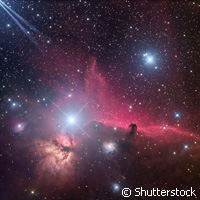Astronomers take a closer look inside red giant stars
We already know that medium-mass stars become red giants when they run out of hydrogen to fuse. But what happens after that? The National Aeronautics and Space Administration (NASA) Kepler mission is offering such a clear view of changes in their brightness that astronomers can find clues about when red giants are hot enough to crack out the helium created from hydrogen fusion. The astronomers' preliminary findings about what is happening inside red giant stars are presented in this week's issue of Nature journal. The study was partially funded by the 'Probing stellar physics and testing stellar evolution through asteroseismology' (PROSPERITY) project, which received a European Research Council (ERC) Advanced Grant worth nearly EUR 2.5 million under the Seventh Framework Programme (FP7). In the paper, astronomers describe how the Kepler spacecraft tracks tiny, regular changes in star brightness. Their regularity resembles steady drumbeats at different rhythms. Each rhythm can be thought of as an individual tooth of a comb. These oscillations have also been studied from ground-based telescopes to determine the star's mass and radius. But the research team also noticed departures from the steady patterns in the Kepler data; these other patterns are caused by gravity mode oscillations. And these waves are allowing astronomers to probe a star's core. They show astronomers whether a red giant star is burning hydrogen in a shell surrounding the star or whether it has evolved to an age that it burns helium in the core. This is something that astronomers hadn't been able to determine before the Kepler mission. Furthermore, 'no one anticipated seeing this before the mission launched,' said Professor Steve Kawaler from the US Iowa State University, leader of the Kepler Asteroseismic Investigation. 'That we could see so clearly down below a red giant star's surface was unexpected.' The transformation from stars burning a hydrogen shell to stars eating up helium is mysterious. To date, astronomers thought that it happens quickly and perhaps explosively. Now, they can ascertain which red giant stars have done it and which will do it, information that will help us better understand the life cycle of red giant stars. Medium-mass stars live by fusing the hydrogen within their cores into helium - this is what our Sun is doing now. In another 5 billion years, the Sun is expected to have used up all the hydrogen in its core, and to start to fuse what little hydrogen remains in a shell wrapped around its core. At the same time, the core temperature of our Sun will increase until it's finally hot enough to fuse the helium created from hydrogen fusion. Eventually, it will transform the helium into carbon and other heavier elements. When it's finished its helium, it won't be quite hot enough to be able to burn the carbon it created. What then? Kepler launched March 6, 2009, from Florida's Cape Canaveral Air Force Station. The spacecraft is orbiting the Sun carrying a photometer, a light meter to measure changes in star brightness. It's like having an instrument that simultaneously studies waves for clues about the stars' surface, and listens beneath the surface for clues about the stars' core. 'But you have to listen very carefully,' Professor Kawaler cautioned. And astronomers will be able to answer the question, and distinguish between stars in different evolutionary stages: giants, and truly giant giants which are known to have different core densities, but are otherwise very similar.For more information, please visit: Nature http://www.nature.com/ PROSPERITY project factsheet on CORDIS: https://cordis.europa.eu/project/id/227224
Countries
Australia, Belgium, Canada, Germany, Denmark, France, Italy, Netherlands, United States



